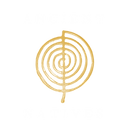The Ancient Roots of Shamanism: A Journey Through History and Cultures - Dive deeper with Shamanic Healing in London
- Kymberley McEnhill
- Sep 19
- 3 min read
Updated: Oct 2

Shamanic Healing in London - Practices Ancient Sacred Healing
Shamanism is one of humanity’s oldest spiritual practices, woven into the very fabric of our earliest societies. Long before organised religion, shamans served as the healers, guides, and wisdom keepers of their people. Their role was to bridge the physical and spiritual worlds, communicating with spirits, ancestors, and nature itself to restore balance and well-being within their communities.
Though the word shaman originates from the Tungusic peoples of Siberia, the practice is truly global, stretching back tens of thousands of years and appearing in cultures across every continent. Let’s explore the history and different types of ancient native peoples who embraced shamanic traditions.
The Origins of Shamanism
Archaeological evidence suggests shamanic practices date back at least 30,000 years. Cave paintings in Europe, depicting animal-human hybrids and trance-like states, hint at ritualistic journeys into other realms. Shamans often entered altered states of consciousness through drumming, chanting, fasting, or plant medicine, seeking wisdom or healing for their tribe.
Shamanism wasn’t a religion in the strict sense, it had no dogma or temples. Instead, it was a way of relating to the world: animistic, revering the spirits of animals, plants, ancestors, and the forces of nature.
Ancient Cultures That Practised Shamanism
1. Siberian and Central Asian Peoples
Where: Siberia, Mongolia, Central Asia
Practices: Drumming, chanting, and soul journeys were common. Shamans wore elaborate costumes with antlers, feathers, and mirrors to embody spirit helpers.
Beliefs: Illness was thought to be caused by soul loss or spirit intrusion. The shaman’s role was to retrieve lost souls or negotiate with spirits for healing.
Legacy: The very term shaman comes from these peoples, particularly the Evenki of Siberia.
2. Indigenous North American Tribes
Where: Across the Great Plains, Arctic, and woodlands
Practices: Vision quests, sweat lodges, and ceremonial drumming. Plant medicines like tobacco, peyote, and sage were used to connect with the spirit world.
Beliefs: Deep reverence for animal spirits, ancestors, and the land. Shamans often acted as mediators between the tribe and the unseen world.
Legacy: Many traditions continue today among Native American nations, despite historical suppression.
3. South American Cultures
Where: Amazon Basin, Andes, and surrounding regions
Practices: Plant medicine played a central role: ayahuasca, San Pedro cactus, and other sacred plants were used to induce visionary states.
Beliefs: The jungle and mountains were alive with spirits. Shamans worked to maintain harmony between humans and these powerful forces of nature.
Legacy: Ayahuasca ceremonies are still practiced widely in the Amazon, attracting global interest in modern times.
4. Celtic and European Traditions
Where: Ancient Europe, including Celtic, Norse, and Finno-Ugric peoples
Practices: Druids and seers served similar roles, using ritual, trance, and natural wisdom to guide their people.
Beliefs: Connection with nature deities, ancestral spirits, and the cycles of the earth. Rituals often aligned with solstices, equinoxes, and seasonal changes.
Legacy: Many folk traditions, herbal medicines, and seasonal festivals across Europe have roots in shamanic practice.
5. African Shamanic Traditions
Where: Across Sub-Saharan Africa, particularly in tribes like the Zulu, San, and Yoruba
Practices: Spirit possession, drumming, dance, and divination with bones or shells. Healing ceremonies were central to community life.
Beliefs: Illness and misfortune were often attributed to spiritual imbalance. Shamans (sometimes called sangomas or witch-doctors) worked to restore harmony.
Legacy: Many African traditions blend shamanic practices with modern religious beliefs, keeping ancient wisdom alive.
6. Australian Aboriginal Dreamtime
Where: Indigenous Australia
Practices: Songlines, chanting, trance states, and storytelling connected people with the Dreamtime, the timeless spiritual realm.
Beliefs: The land itself was sacred, created and sustained by ancestral beings. Shamans acted as intermediaries to maintain this connection.
Legacy: Dreamtime stories and ceremonies continue to be central to Aboriginal culture and identity.
Why Shamanism Matters Today
Though the outward forms vary, shamanism shares a universal truth: humans are part of a living, interconnected web of nature and spirit. In a world often disconnected from these roots, many are rediscovering shamanic practices as pathways to healing, personal growth, and ecological awareness.
From Siberia to the Amazon, from Africa to Europe, the voices of the ancient shamans still echo, reminding us that healing doesn’t come from separation, but from reconnection.
Shamanism is not a relic of the past, it’s a living tradition, a reminder that wisdom, healing, and balance can be found by listening deeply to the earth and the spirit world.
Shamanic Healing in London
To book shamanic healing in London contact me at healing@ancientnatives.com
.png)